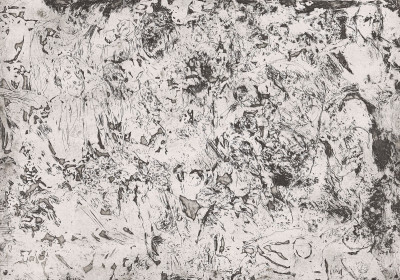Luc Tuymans on Brexit, Ensor and the establishment
Luc Tuymans on Brexit, Ensor and the establishment
By Sam Phillips
Published 18 October 2016
Belgium’s leading contemporary painter, who curates the RA’s James Ensor exhibition, tells Sam Phillips why it is time to reassess Ensor’s art.
-
From the Autumn 2016 issue of RA Magazine, issued quarterly to Friends of the RA.
I meet Luc Tuymans at the Royal Academy on Friday 24 June, a few hours after the results of the EU Referendum. The most obvious question is my first: what does Belgium’s most famous living painter think of the British rejection of Brussels?
“It comes as no surprise – I expected it, having seeing the ignorance that reigns in these isles,” the 58-year-old artist replies, in characteristically frank fashion. “Of course, the decision reflects how the political world itself has lost credibility, but also the lack of empathy between Britain and Europe. That’s what makes a show of Ensor so interesting now. It couldn’t be more timely.”
Tuymans is curating the Academy’s James Ensor exhibition, allowing us to see one of modern art’s most intriguing painters through a contemporary artist’s eyes; on his laptop he shows me computer renders of his spare, elegant hang. Tuymans is astonished that an artist of Ensor’s status is not well known in Britain, and enjoys the irony that Ensor was in fact – as the son of an Englishman – a British national, until late in life when he decided to naturalise as a Belgian. And those who do know Ensor, he says, often know the myth rather than the man.
-

Luc Tuymans

Luc Tuymans, Untitled, 1976.
-
“Ensor is mostly portrayed as an eccentric, grotesque figure, which is just a cliché. He was a modern artist who was against any form of academicism, a predecessor of Expressionism and someone with a clearly defined political stance against the bourgeoisie. But he was a trained artist, as you can see from the drawings in the show, so he was certainly not an Outsider artist.
"His work was informed and deliberate and responded to art history. The moment he portrays himself with the flower hat he makes a clear connotation with Rubens’ The Straw Hat, ironic or not. There are elements of respect and admiration in Ensor’s painting but also disgust and mockery. He was trying to shake things up, because Rubens was – and is – an icon in Belgium.” Ensor’s anti-establishment aura is made more uncertain by the fact that he became a baron, by order of King Albert I, in 1929.
-
Ensor and Tuymans share an essential edginess, unafraid to excavate ideas and images from the darkest of corners.
-
So we have a painter who is both an insider and an outsider, but always an agent provocateur. Perhaps this could be a description of Tuymans himself, for while their work is stylistically dissimilar, the Antwerp-based contemporary painter and the éminence grise from Ostend share an essential edginess, unafraid to excavate ideas and images from the darkest of corners. Tuymans’ paintings have drawn on photographs and films related to the horrors of the Holocaust, the Belgian Congo and the Iraq War. Once reframed in oil on canvas – out of focus in the artist’s loose brushwork and chromatically compressed in palette – the images become abstract but more unsettling, the distance from the original material a space for the viewer to question both its subject and, more generally, what images can mean today.
A display of Tuymans’ work is presented at the National Portrait Gallery this autumn and the artist has included in the Ensor exhibition his painting Gilles de Binche (2004, pictured), which depicts in ghostly tones a costume from the Carnival of Binche in Belgium. It was Ensor’s own indelible image of carnival, The Intrigue, that captivated a teenage Tuymans. He has chosen it as the title of the exhibition.
“I realised then that the intensity of the figure in the centre, the one with the hat, was the breaking point of the whole painting,” he recalls. “In a very weird way the figure stares out, although it has no eyes. It is clearly confrontational with the viewer, whereas the others aren’t – they look away. The hat is the real element. It is emblematic of the bourgeois, which is translated into the idea of danger.”
James Ensor is in The Sackler Wing of Galleries at the RA from 29 October 2016 – 29 January 2017.
-
-
Enjoyed this article?
Become a Friend to receive RA Magazine
As well as free entry to all of our exhibitions, Friends of the RA enjoy one of Britain’s most respected art magazines, delivered directly to your door. Why not join the club?

-






